low growing flowers to sow in lawn?
I'm looking for a list of low growing flowers/plants, 3-4" tops, that I can seed into my existing lawn. I've heard about clover, wild violets, buttercup, thyme, chamomile. Any suggestions? How do I sow - mixed into grass seed when oversowing or boradcast separately? Where can I get the seed? I'd sure like to see some in my lawn this season. thanks!
Comments (36)
burghroots
21 years agoThis is exactly the question I was going to ask. We just moved into a house in an older neighborhood where the lawns are all very nicely kept. Nothing special, it's not a posh place, but I would like to have mostly herbs and flowers and very little grass, but still have it look decent during the long winter. We have mixed shade and sun, with the most sun in the morning. There's one huge old tree whose roots are on the surface. What a fun place to tuck something. I know a lot about gardening, but not how to create this type of front yard.
Thanks, Clare
Related Professionals
Belmont Landscape Architects & Landscape Designers · Cary Landscape Architects & Landscape Designers · East Rancho Dominguez Landscape Architects & Landscape Designers · Palm Springs Landscape Architects & Landscape Designers · Prairie Ridge Landscape Architects & Landscape Designers · Bethlehem Landscape Contractors · Federal Way Landscape Contractors · Hayden Landscape Contractors · Nashua Landscape Contractors · North Richland Hills Landscape Contractors · Quincy Landscape Contractors · Ridgewood Landscape Contractors · Spring Landscape Contractors · Cincinnati Decks, Patios & Outdoor Enclosures · Del Aire Decks, Patios & Outdoor EnclosuresJohn_Blakeman
21 years agoSorry, but what you envision doesn't exist. You can't just toss some seeds in the turf and expect them to establish and persist. The grass is too competitive. You'd have to start by killing existing turf and then seeding the forb ("wildflower") seeds into bare soil, then watering and mowing, and . . .
But you are most likely to end up with a mass of undesireable weeds, too.
Real meadows (prairies, native grass areas) don't just happen. They have to be specially created with appropriate seed mixes (varying from region to region) planted and nurtured properly.
Sorry for the bad news.
froggy
21 years agoi think there are some things u can put into a lawn to 'livin it up'.
crocus and other spring time bulbs are a perfect example of what u can do. mow and rake it clean in the late fall and rake it again in the early spring so u dont have to mow while these beauties are doing their thing. once the bloom is done...the mowing then starts and they sleep till another springtime blooms them.
but for the most part john i correct...that animal just doesnt exist. but i do have a solution for u all.
KILL THE LAWN AND START ALL OVER :)
froggy
Ashley_Clark
Original Author21 years agoI'm not looking for a real meadow, just an interesting lawn. I've already got some clover growing, and I planted several wild violets in the bare spots. Bee-yoo-tee-full! FYI I've put a posting on a local internet bulletin board looking for vinca, ivy, bulbs, forsythia, dogwood, etc.; folks here are starting to clean up their gardens and I volunteer labor to help cull their gardens. I get great freebies! Most of these are going in specific garden spots, not in that lawn I'm talking about in this post. However, I have had folks offer to let me dig up their wild white and blue violets, and the buttercup later in the season. I'll just pop in the plants and not worry about seeding. It's not like I don't have time to let it do its own thing - the lawn is already feeling pretty spoiled just getting mowed! I've also heard of scilla and other bulbs. The possibilities are endless. Woo hooo!
macfairman
21 years agoSomeone posted a picture of a heart shaped collection of crocus she planted into her lawn last fall. It was stunning! I found the post, see the link below.
CJ
Here is a link that might be useful: crocus in lawn
WildFlour
21 years agoAshley_Clark..this is exactly what I am planning to do. I have a question, did you just you seed to establish the clover or was it already there?
Ashley_Clark
Original Author21 years agoHi WildFlour. My lawn came ready made with clover. It's pretty spotty coverage, though.
John_of_Illinois
21 years agoPossible species to consider are Claytonia virginica (Spring Beauty), Hypoxis hirsuta (Yellow Stargrass), the smaller Houstonia spp. (Bluets), and Antennaria spp. (Pussytoes). Spring Beauty, in particular, adapts well to lawns. The others may thrive if mowing is delayed until after the blooming period, and the grass is not cut too short later in the year. It's much easier (but expensive) to establish these species in a lawn using nursery-grown plants, or by planting the bulbets. The germination of seed of such species in a lawn is less reliable and may produce disappointing results.
erstanfo
21 years agoSee: http://gardening.wsu.edu/library/lawn006/lawn006.htm for study done at Oregon State Univ on this subject.
The basic components in the Corvallis OR trials are perennial ryegrass and Kentucky bluegrass. Other additions include yarrow, Roman chamomile, English lawn daisy, and clover.
Another comercial seed mixes are ECOTURF - ECOLOGY LAWN - FLEUR DE LAWN
john_mo
21 years agoNot sure if this example fits the above request exactly, but this morning I noticed that volunteers of woodland phlox P. divaricata, were blooming in an area of lawn that has not yet been mowed this spring.
This plant grows to well over mowing height (12 inches plus) when in bloom, but the persistent, semi-evergreen leaves that remain after the bloom period are much shorter and may well survive a summer's mowing -- as apparently did the seedlings survived mowing last summer.
The nearby bed that was the source of the phlox seedlings also containes spring beauty, and I hope that this species will also gradually migrate into my weedy lawn.
Another species that has been seeding itself around liberally is golden ragwort, Senecio obovatus. This is another species that gets pretty tall when in bloom (a little later than the phlox, it is just starting to bloom now), but the persistent leaves are much lower. I have not seen this species in my lawn yet, but it seems likely that it will eventually grow there, especially if I delay mowing in the spring.
All of these speices are good reasons to mow less and to start mowing later in the spring. All my neighbors have been mowing for weeks, but I have only had to to a little touch-up mowing of high-visibiilty areas of my non-fertilized lawn!
Here is a link that might be useful: woodland phlox
Bullnettle
21 years agoI went to my son's house this week; in their lawn, growing beautifully, were winecups, pink evening primroses, and herbetias. All, including the grass, were under 5" tall, and probably under 4". Another suggestion is blue-eyed grass.
Doctorant
21 years agoIt is important, if you want whatever you add or allow in to this lawn to persist, that you NOT fertilize the lawn and to mow high - as suggested by John, above. Fertilization strongly favors dense grass which leaves no space for the colorful species. Crocus and snow drops are non-invasive Old World bulb species, and violets, Johnny-jump-ups, spring beauties and most suggested by others should work in your area.
John_of_Illinois
21 years agoSome other species for lawns: Viola sororia (Common Blue Violet), Ranunculus fasciculatus (Early Buttercup), Fragaria virginica (Wild Strawberry), and Senecio plattensis (Prairie Ragwort). These are all low-growing plants that bloom during the spring. Again, it's important to delay mowing during the spring, don't cut the grass too often or too short, and don't apply fertilizer containing nitrogen. Other species of violets or ragworts are potentially adaptable to a lawn-meadow as well. The Common Blue Violet is an aggressive spreader, even in lawns that are maintained normally. The Wild Strawberry and Ragworts can spread readily as well if the lawn is not cut too short. Early Buttercup I'm not certain about -- it's quite short and blooms early, however I'm not that familiar with its adaptability and capacity to spread in lawns. I've seen Dentaria laciniata (Cutleaf Toothwort) invade mowed areas -- this is normally a spring wildflower of woodlands that may flourish in partially shaded areas of the lawn if one adheres to the above mowing regimen.
greenjeans_seattle
20 years agoi'm researching plants to put in a lawn too. here is a list of plants that look promising:
roman chamomile
english daisy
scotch moss
irish moss
creeping thyme
mock strawberry
buttercupa roman chamomile lawn is supposed to smell great when walked on.
i'm also going to experiement with real mosses.
i'm starting from bare soil, and will try planting plugs of the plants. maybe you can cut out some circles of sod, and plant the flowers/moss, then follow the mowing and (no) fertilization methods already suggested.
have fun!
denise
oogy4plants
20 years agoThis spring I saw creeping phlox growing in lawns nearby and they looked great! I was wondering how to get them established. The patches I saw were pretty big but interspersed with lawn grass. I did not see any weeds. I guess since it is evergreen and low growing it is ideal for this. Anybody here done this?
greenjeans_seattle
20 years agoan update: i seeded with "fleur de lawn" and planted indiviual plants of english daisy and irish & scotch mosses. it's great! the lawn filled in around the plants. i helped the plants out by cutting the grass low around them, and they are spreading nicely. i planted more plants after the grass was up, by cutting holes in the grass and planting there. the front yard is done, and i just started on my back. it can be done! (:
jmb123
20 years agoWe have lots of common blue violet, which has volunteered to infiltrate the entire lawn. I'm still not sure whether to be happy or worried. Looks nice in the spring, though. A very subtle volunteer is dwarf cinquefoil -- tiny yellow flowers low to the ground. Not a bold statement, just a quiet beauty waiting to be discovered.
rebow
20 years agoOne of the prettiest things I've ever seen was my neighbors lawn this spring when the johnny jump ups and dandelions(gasp) all bloomed. Those colors work great together. My kids and i had a blast making wishes on all those dandelions once they went to seed.
steilberg
20 years agoare you sharing your list / we have a problem with small vine with round leaves.
OSU_Holticulturist
19 years agoWe used "Fleur de Lawn" eco-lawn and it is great. Low maintenance and beautiful. The english daisy and red clover provide much color.
Gralfus
18 years agoBaby Blue Eyes - Nemophila menziesii
I had this in a lawn mix once. Very pretty, but they didn't come back after mowing, so I must have mowed too low, or the clover choked them out.
ahughes798
18 years agoAshley, You may rue the day you planted the English Ivy, it's very invasive, and may not only become a problem for you, but for your neighbors, too. Everything else sounds really cool!
I've got violets and white clover in my lawn, I just leave them be, they're kind of pretty. The clock is ticking on the lawn, anyway. April
taylmat_OK
18 years agoBlue-eyed grass is all over lawns here in north Tulsa. Looks marvelous. Bermuda is just getting going unfortunately and people are mowing them down. The variety in my lawn is about 4" tall.
catherine5
11 years agoThis is not a flowering plant but it is very low growing so you get a lawn which requires no cutting and looks great Try Dicondra Repens. It has small slightly round leaves and once established spreads quickly. It is starting to overtake the grass in my lawn. I now wish I had started with this plant before planting grass seed. Hope this helps
watchnerd
11 years ago"Sorry, but what you envision doesn't exist. You can't just toss some seeds in the turf and expect them to establish and persist."
Actually, you can.
I broadcast both dutch white clover and crimson clover on my lawn earlier in the year in copious amounts (clover seed is cheap). I didn't even rake first. And I now have crimson clover blooms popping up.
HU-622436739
5 years agoHi. I just found this thread and I have spent the last year doing just what the poster asked for. Filling a regular lawn with flowers. It is a very large boulevard and needs grass because it gets a lot of foot traffic from a school across the road! For three years I have amassed a large amount of scilla and then violets in spring. Also a lot of red and white clover and bird's foot trefoil with it's beautiful yellow flowers. Then this year I decided to add more flowers and proceeded to find varieties of flowers that grew in other lawns, neglected ones! I have added autumn hawkbit which looks like delicate dandelions while I try to control the actual dandelions. I added heal-all which was growing elsewhere on my property. I have a large area of cinquefoil and a large area of wild strawberry which has yellow flowers and red berries. I have some mouse-ear hawkweed which looks like low dandelions. I have 4 medium size saskatoon berry trees down the centre of the boulevard and in a circle around each I planted higher flowers like wild chamomile, tumble mustard, 2 kinds of knapweeds and they grow with red clover and vetch and bird'sfoot trefoil, all left unmowed so they can flower and spread seed. Speaking of mowing, I always mow quite high and around any patches of blooms. When any patch of one plant gets too dense, I mow it short in early spring or late fall and throw down grass seed. With no watering and no mowing in times of bad drought, the lawn stays green and colourful with flowers. I'm now always looking at weedy lawns to see what new variety I can find. I don't want any weeds that don't stay green or that don't flower. By the way, my boulevard is in front of a four foot high wall to the rest of my property, so I don't have to worry about any weeds being too invasive and my one neighbour has a very sparse neglected weedy boulevard so no worries there.
HU-622436739
5 years agoSo yeah, you can't just broadcast seed for some of the wildflowers and expect them to grow thru the turf. Especially when the clovers and bird's foot trefoil are supplying the lawn with lots of nitrogen, (and shade in the drought times) and keeping the turf lush! So I have transplanted quite a few tumble mustard, high knapweed, chicory, fleabane, smartweed, mouse-ear hawkweed, autumn hawkbit, etc. this fall. I transplanted some during the summer months with varying degrees of success - I hope these fall plantings work better. The problem with transplanting them during the hot sunny months: they don't take as well; I'm putting them in bare spots and disturbing the soil which leads to a lot of unwanted weeds; and of course they need to be watered which leads to a huge number of sprouting unwanted weeds! Next summer, I have a different plan. I will cover any bare spots with corn gluten meal which acts as a pre-emergent herbicide for several weeks and then decomposes to a fertilizer by the time the weather turns cooler and I'm ready to plant stuff without just getting undesirable weeds like plantain, knotweed, and crabgrass. My plan was initially to not have to water this lawn anyway and now I see that watering in times of drought really leads to unwanted weeds. The lawn is thin topsoil on top of pure sand so it has always died every few years when a bad enough drought hit. I have mulched endless leaves into the lawn for 3 years and with the great number of earthworms that brings, my soil is getting better. Also the shade and nitrogen provided by the clovers, vetch, and bird's foot helps the actual grass stay green.
Some plants simply do NOT like to be transplanted - bird's foot is one of those. Fortunately, you can collect seed from the pods somewhere where it is growing and broadcast them over the lawn and it will eventually take hold. It is very small the first year (I haven't even been able to determine when it is sprouting), noticeable the second year if you know what to look for, and healthy and flowering by the third year. There is a saying: "the first year it sleeps, the second year it creeps, and the third year it leaps!"
White and red clover and violets and of course dandelions will all grow easily if seed is spread over the turf, especially if it is mown very short first.
The next thing I'm working on is which weeds help or kill other grasses and weeds. Obviously wide leaves like dandelion, plantain, and violets deny grass beneath them water and sun and can choke it out. But I'm more interested in chemicals that plants produce to fight or help competition. There is a lot of info available on companion planting for vegetables but for weeds - not much. So I'm just watching and watching. I had one patch of a lush green prostrate knotweed that killed everything beneath it. Another patch of lush pinkish knotweed that did the same. But regular knotweed is not as bad. Autumn hawkbit (like delicate dandelions) inhibits sprouting near it, even of its own seed! But it doesn't bother growing grass. Mouse-ear hawkweed does the same and so sends runners like strawberries to propagate itself into dense mats which will then smother grass.
The first line of defense against unwanted weeds is to mow the grass very short, but this tactic is NOT available when the goal is to have lots of wanted weeds. Next summer I plan to try spraying leaves of dandelions, plantain, and violets with vinegar and a tsp. of dish soap on a hot, sunny day. This is said to kill the leaves but not the root. That's O.K. with me if it works. I just want to hold back these aggressive weeds from taking over.Jay 6a Chicago
5 years agoSiberian squill makes its way into the lawn without my help so throwing some of those seeds into the mix would be productive. English daisy is another one that would look nice, but I don't know how hard it would be to establish. There are so many different types and colors of native violets, and some beautiful short grasses like Buffalo grass that never needs to be mowed. A very short meadow can be created if Buffalo grass is the main turf.
HU-622436739
4 years agoO.K. it's one year later, end of Oct. 2019 and I've learned some more things for my flower lawn. First of all corn meal gluten does work but not particularily well so far for me. And it may be because of the product I bought....I don't know anything of the composition of mine (plain bag from a feed mill) but corn meal gluten comes in 20% or 60% protein and "glued together" with either sugar which melts easily and waters in with one rain or cheaper starch which does not melt for 4 or 5 rains and makes a hard, smelly, impenetrable crust on the soil surface. In any case, in one test area it did give some results as a fertilizer but I had equal results in a second test area right beside with an application of ground up yard waste and last fall's leaves mulched together. And for keeping weeds from sprouting a thin layer of mulched grass clippings and old leaves did just as good. In fact I seeded a small bare spot with grass seed, covered it with my above mulch, watered it every day, and the grass sprouted, lifted the mulch like a blanket over itself, and NO WEEDS sprouted in the hot part of August in that patch.
Most of the weeds I transplanted did not grow the next year. An exception is fall dandelions which transplanted very well. I also gathered and threw down huge quantities of seed of fall dandelions. This may become my most important flower because I think it may solve the dandelion problem with it's allelopathic properties! I also collected and dispersed a lot of seeds of scilla, crown vetch, cow vetch, chamomile, wild carrot, mustard, some wild clovers, etc. I even planted a few wild yellow violets in a spot with a little bit of shade. We'll see what comes up thru the grass next year.
Oh yes, basically my experiment is a success. My grass stayed green through a brutal hot dry spell wherever there was enough bird'sfoot trefoil, mainly, along with clovers red, white, and yellow, to shade the grass stems.....and the rest of the lawn area is now spotted with bird'sfoot seedlings and some vetch seedlings. The violets, Indian strawberries, heal-all, cinquefoils, and autumn hawkbit (fall dandelions) also stayed green.
RazeRHU-622436739
2 years agolast modified: 2 years agoWell, now it is 1 1/2 years later. June 11, 2021. My boulevard is 16 inches high, lush, and a riot of blooms. All blooming at the same time are red clover, white clover, yellow bird'sfoot trefoil, pink crown vetch, white/yellow daisies, buttercups, white yarrow, blue alfalfa, and yellow sweet clover! The Indian strawberries and cinquefoil are also blooming yellow flowers, but they are small, low plants almost lost in the exuberance of larger plants. In spite of very hot and dry spells and only very spotty rain the past month, it looks lush! Many of the things I told about trying to transplant last post have in fact NOT taken. Seems like a lot of weeds just don't want to be transplanted. Knapweeds, in particular have been impossible. A few days ago I transplanted 13 cow vetch plants. They have beautiful blue/purple flowers which start earlier than the crown vetch pink ones and last very late in the season. I have thrown down endless seed the last 2 years with no results, so we'll see whether transplanting them works.
Guess what has happened? No unwanted weeds this year except for a few dandelions which I dig out just before they go to seed. I then plant another scilla in the root hole. No knotweed, no speedwell, no plantains, no mouse-eared chickweed, no wood sorrel, and no black medic. Nothing that dies in the drought leaving a bare spot of ground....
And I've learned about converting sand into soil. Lots of organic matter, lots of growing roots, lots of surface growth, lots of variety of plants; keep the soil covered and keep the soil dark! The most amazing revelation was amount of organic matter. One author said, "however much organic matter you imagine it will take to change sand into soil, well it will take 100 times that much!" That lead me to new ways of adding organic matter without "overwhelming" my "lawn."
RazeR
rosaprimula
last yearA parasite such as yellow rattle (rhinanthus minor) is helpful in controlling the vigour of grasses. I find it can be sown directly into the soil if you take the trouble to scrape out a little space between grass stems. Bulbs are also your friend - in my climate, I have a large choice of spring flowering bulbs which are quick to take advantage of lengthening spring days before a tree canopy shades them out. For me, I grow anemones - blanda, nemorosa and coronaria, along with the smaller camassias, leucojum, ipheon and crocus (spring and autumn). Cowslips and primula vulgaris do well, as will thrift (armeria maritima),. In a damper climate than mine, all of the ranunculus do well, flowering then going dormant over summer. Fritillaries and narcissus will also naturalise in grass. Taller plants such as thalictrum and ox-eye daisies
I do keep the fertility low, removing all mowings, and will plant plugs of annuals such as agrostemma, red flax, orlaya and linaria, whenever I have seeds or on a whim. This is very much an ongoing experiment, but does have a historical precedent as grassy meads...or alpine meadows. Oh yeah, the little wild gladioli byzantinus is another possibility, as well as colchicums and cyclamen. I am keen to prolong the flowering season, in another part of the plot, trying later summer perennials such as scabious, sanguisorba, eryngiums and achilleas, by varying the cutting times. Expect some failings, some unexpected successes, a fair bit of weeding.
Deborah lippitt
11 months agoKnapweed is a noxious highly invasive weed..not native to this country and out competes just about everything. Please check and see what you are planting and where. Linaria is also invasive in some places. Western Buttercup is the only one that is native and not considered invasive...check, the rest are not native.
rosaprimula
8 months agoNot everyone is in thrall to natives...astonishing as that may seem. Whilst I appreciate the arguments against invasive plants, I find it absolutely laughable that after hundreds of years of global trade and movement, there is this sudden (and utterly arbitrary division between native and non-native.Please desist with the hectoring tone.
donnaroyston
7 months agoNon-native is one thing and invasive is another. Of course you should try not to introduce harmful plants that you are fortunate enough not to have yet. I hope you would not want a plant that swamps and smothers everything else. It is sad to see the woods around me swathed in porcelain berry and Asian honeysuckle. Ten years ago at this time of year there were wild coreopsis, sunflowers, Joe Pye weed, and other flowers, now gone or almost gone. A butterfly is a rare sight. Yes, after hundreds of years of global trade, invasives are still a menace to natural landscapes and they are still expanding.
In the photo: sycamore and tulip poplars, and expanding porcelain berry covering everything else.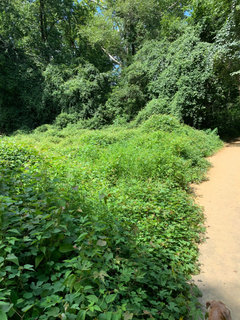
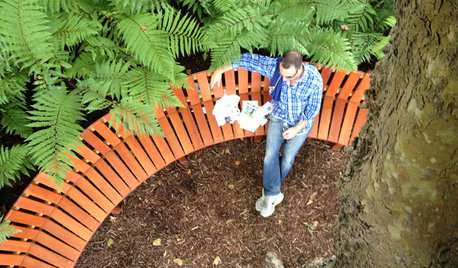



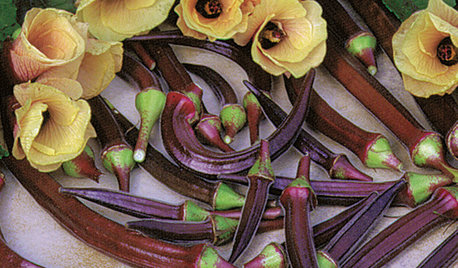
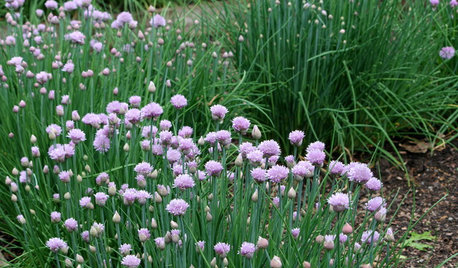


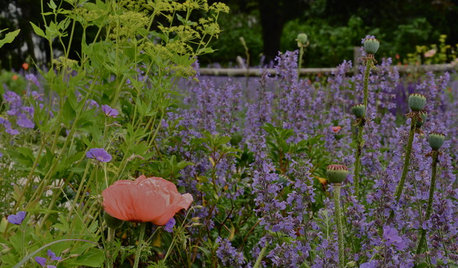
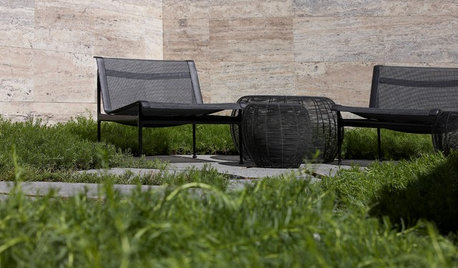






ken_mce